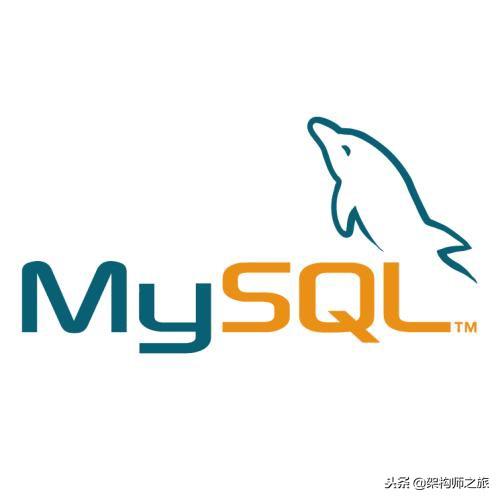
一、基础
1、说明:创建数据库
CREATE DATABASE database-name
2、说明:删除数据库
drop database dbname
3、说明:备份sql server
--- 创建 备份数据的 device
USE master
EXEC sp_addumpdevice 'disk', 'testBack', 'c:mssql7backupMyNwind_1.dat'
--- 开始 备份
BACKUP DATABASE pubs TO testBack
4、说明:创建新表
create table tabname(col1 type1 [not null] [primary key],col2 type2 [not null],..)
根据已有的表创建新表:
A:create table tab_new like tab_old (使用旧表创建新表)
B:create table tab_new as select col1,col2… from tab_old definition only
5、说明:删除新表
drop table tabname
6、说明:增加一个列
Alter table tabname add column col type
注:列增加后将不能删除。DB2中列加上后数据类型也不能改变,唯一能改变的是增加varchar类型的长度。
7、说明:添加主键: Alter table tabname add primary key(col)
说明:删除主键: Alter table tabname drop primary key(col)
8、说明:创建索引:create [unique] index idxname on tabname(col….)
删除索引:drop index idxname
注:索引是不可更改的,想更改必须删除重新建。
9、说明:创建视图:create view viewname as select statement
删除视图:drop view viewname
10、说明:几个简单的基本的sql语句
选择:select * from table1 where 范围
插入:insert into table1(field1,field2) values(value1,value2)
删除:delete from table1 where 范围
更新:update table1 set field1=value1 where 范围
查找:select * from table1 where field1 like ’%value1%’ ---like的语法很精妙,查资料!
排序:select * from table1 order by field1,field2 [desc]
总数:select count as totalcount from table1
求和:select sum(field1) as sumvalue from table1
平均:select avg(field1) as avgvalue from table1
***:select max(field1) as maxvalue from table1
最小:select min(field1) as minvalue from table1
11、说明:几个高级查询运算词
A: UNION 运算符
UNION 运算符通过组合其他两个结果表(例如 TABLE1 和 TABLE2)并消去表中任何重复行而派生出一个结果表。当 ALL 随 UNION 一起使用时(即 UNION ALL),不消除重复行。两种情况下,派生表的每一行不是来自 TABLE1就是来自 TABLE2。
B: EXCEPT 运算符
EXCEPT运算符通过包括所有在 TABLE1 中但不在 TABLE2 中的行并消除所有重复行而派生出一个结果表。当 ALL 随 EXCEPT 一起使用时 (EXCEPT ALL),不消除重复行。
C: INTERSECT 运算符
INTERSECT运算符通过只包括 TABLE1 和 TABLE2 中都有的行并消除所有重复行而派生出一个结果表。当 ALL随 INTERSECT 一起使用时 (INTERSECT ALL),不消除重复行。
注:使用运算词的几个查询结果行必须是一致的。
12、说明:使用外连接
A、left (outer) join:
左外连接(左连接):结果集几包括连接表的匹配行,也包括左连接表的所有行。
SQL: select a.a, a.b, a.c, b.c, b.d, b.f from a LEFT OUT JOIN b ON a.a = b.c
B:right (outer) join:
右外连接(右连接):结果集既包括连接表的匹配连接行,也包括右连接表的所有行。
C:full/cross (outer) join:
全外连接:不仅包括符号连接表的匹配行,还包括两个连接表中的所有记录。
12、分组:Group by:
一张表,一旦分组 完成后,查询后只能得到组相关的信息。
组相关的信息:(统计信息) count,sum,max,min,avg 分组的标准)
在SQLServer中分组时:不能以text,ntext,image类型的字段作为分组依据
在selecte统计函数中的字段,不能和普通的字段放在一起;
13、对数据库进行操作:
分离数据库: sp_detach_db;附加数据库:sp_attach_db 后接表明,附加需要完整的路径名
14.如何修改数据库的名称:
sp_renamedb 'old_name', 'new_name'
二、提升
1、说明:复制表(只复制结构,源表名:a 新表名:b) (Access可用)
法一:select * into b from a where 1<>1(仅用于SQlServer)
法二:select top 0 * into b from a
2、说明:拷贝表(拷贝数据,源表名:a 目标表名:b) (Access可用)
insert into b(a, b, c) select d,e,f from b;
3、说明:跨数据库之间表的拷贝(具体数据使用绝对路径) (Access可用)
insert into b(a, b, c) select d,e,f from b in ‘具体数据库’ where 条件
例子:..from b in '"&Server.MapPath(".")&"data.mdb" &"' where..
4、说明:子查询(表名1:a 表名2:b)
select a,b,c from a where a IN (select d from b ) 或者: select a,b,c from a where a IN (1,2,3)
5、说明:显示文章、提交人和***回复时间
select a.title,a.username,b.adddate from table a,(select max(adddate) adddate from table where table.title=a.title) b
6、说明:外连接查询(表名1:a 表名2:b)
select a.a, a.b, a.c, b.c, b.d, b.f from a LEFT OUT JOIN b ON a.a = b.c
7、说明:在线视图查询(表名1:a )
select * from (SELECT a,b,c FROM a) T where t.a > 1;
8、说明:between的用法,between限制查询数据范围时包括了边界值,not between不包括
select * from table1 where time between time1 and time2
select a,b,c, from table1 where a not between 数值1 and 数值2
9、说明:in 的使用方法
select * from table1 where a [not] in (‘值1’,’值2’,’值4’,’值6’)
10、说明:两张关联表,删除主表中已经在副表中没有的信息
delete from table1 where not exists ( select * from table2 where table1.field1=table2.field1 )
11、说明:四表联查问题:
select * from a left inner join b on a.a=b.b right inner join c on a.a=c.c inner join d on a.a=d.d where .....
12、说明:日程安排提前五分钟提醒
SQL: select * from 日程安排 where datediff('minute',f开始时间,getdate())>5
13、说明:一条sql 语句搞定数据库分页
select top 10 b.* from (select top 20 主键字段,排序字段 from 表名 order by 排序字段 desc) a,表名 b where b.主键字段 = a.主键字段 order by a.排序字段
具体实现:
关于数据库分页:
declare @start int,@end int
@sql nvarchar(600)
set @sql=’select top’+str(@end-@start+1)+’+from T where rid not in(select top’+str(@str-1)+’Rid from T where Rid>-1)’
exec sp_executesql @sql
注意:在top后不能直接跟一个变量,所以在实际应用中只有这样的进行特殊的处理。Rid为一个标识列,如果top后还有具体的字段,这样做是非常有好处的。因为这样可以避免 top的字段如果是逻辑索引的,查询的结果后实际表中的不一致(逻辑索引中的数据有可能和数据表中的不一致,而查询时如果处在索引则首先查询索引)
14、说明:前10条记录
select top 10 * form table1 where 范围
15、说明:选择在每一组b值相同的数据中对应的a***的记录的所有信息(类似这样的用法可以用于论坛每月排行榜,每月热销产品分析,按科目成绩排名,等等.)
select a,b,c from tablename ta where a=(select max(a) from tablename tb where tb.b=ta.b)
16、说明:包括所有在 TableA中但不在 TableB和TableC中的行并消除所有重复行而派生出一个结果表
(select a from tableA ) except (select a from tableB) except (select a from tableC)
17、说明:随机取出10条数据
select top 10 * from tablename order by newid()
18、说明:随机选择记录
select newid()
19、说明:删除重复记录
1),delete from tablename where id not in (select max(id) from tablename group by col1,col2,...)
2),select distinct * into temp from tablename
delete from tablename
- insert into tablename select * from temp
评价: 这种操作牵连大量的数据的移动,这种做法不适合大容量但数据操作
3),例如:在一个外部表中导入数据,由于某些原因***次只导入了一部分,但很难判断具体位置,这样只有在下一次全部导入,这样也就产生好多重复的字段,怎样删除重复字段
alter table tablename
--添加一个自增列
add column_b int identity(1,1)
delete from tablename where column_b not in(
select max(column_b) from tablename group by column1,column2,...)
alter table tablename drop column column_b
20、说明:列出数据库里所有的表名
- select name from sysobjects where type='U' // U代表用户
21、说明:列出表里的所有的列名
select name from syscolumns where id=object_id('TableName')
22、说明:列示type、vender、pcs字段,以type字段排列,case可以方便地实现多重选择,类似select 中的case。
select type,sum(case vender when 'A' then pcs else 0 end),sum(case vender when 'C' then pcs else 0 end),sum(case vender when 'B' then pcs else 0 end) FROM tablename group by type
显示结果:
- type vender pcs
- 电脑 A 1
- 电脑 A 1
- 光盘 B 2
- 光盘 A 2
- 手机 B 3
- 手机 C 3
23、说明:初始化表table1
TRUNCATE TABLE table1
24、说明:选择从10到15的记录
select top 5 * from (select top 15 * from table order by id asc) table_别名 order by id desc
三、技巧
1、1=1,1=2的使用,在SQL语句组合时用的较多
“where 1=1” 是表示选择全部 “where 1=2”全部不选,
如:
- if @strWhere !=''
- begin
- set @strSQL = 'select count(*) as Total from [' + @tblName + '] where ' + @strWhere
- end
- else
- begin
- set @strSQL = 'select count(*) as Total from [' + @tblName + ']'
- end
我们可以直接写成
错误!未找到目录项。
- set @strSQL = 'select count(*) as Total from [' + @tblName + '] where 1=1 安定 '+ @strWhere 2、收缩数据库
- --重建索引
- DBCC REINDEX
- DBCC INDEXDEFRAG
- --收缩数据和日志
- DBCC SHRINKDB
- DBCC SHRINKFILE
3、压缩数据库
dbcc shrinkdatabase(dbname)
4、转移数据库给新用户以已存在用户权限
- exec sp_change_users_login 'update_one','newname','oldname'
- go
5、检查备份集
- RESTORE VERIFYONLY from disk='E:dvbbs.bak'
6、修复数据库
- ALTER DATABASE [dvbbs] SET SINGLE_USER
- GO
- DBCC CHECKDB('dvbbs',repair_allow_data_loss) WITH TABLOCK
- GO
- ALTER DATABASE [dvbbs] SET MULTI_USER
- GO
























